You may know Sharon Bamber from her incredible 1,000-mile expedition of walking and painting the Way of Saint James in Spain. At the most recent Plein Air Convention, she shared a moving video about her experience, which brought Wows and giggles from the audience. Why the laughter? Sharon used a brilliant solution to painting in the rain and cold: a pod.
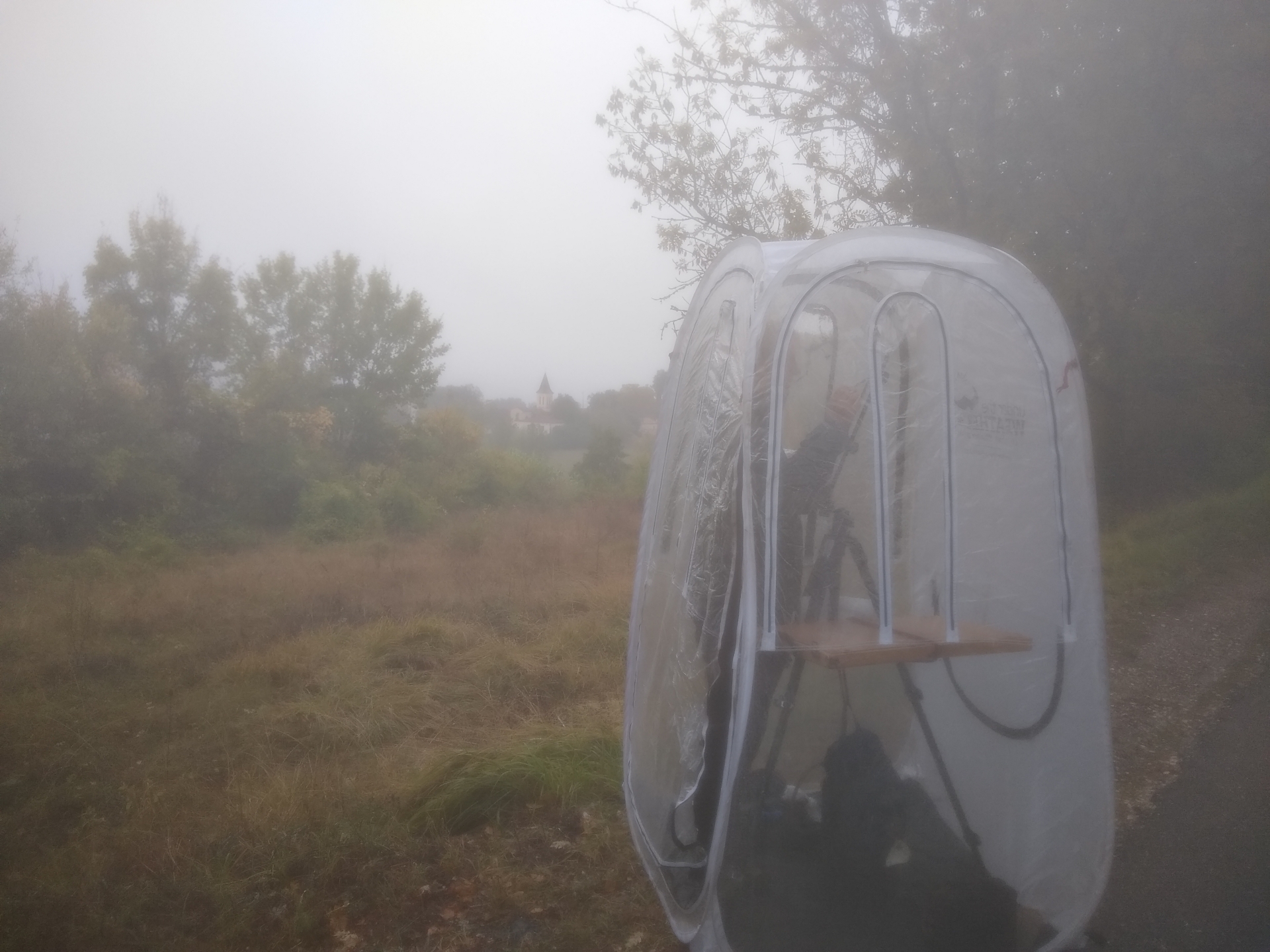
“I first came up with the idea of painting in a pod when I was invited to take part in the Hockaday Museum plein air paint-out in Glacier National Park a few years ago,” Sharon said. “I knew that there was a high chance of bad weather and I needed a way to be able to paint with pastels in the rain without ruining them.”
She added that she “didn’t want to hide under a building porch or in a car and be forced to paint something that didn’t inspire me, and I definitely didn’t want to miss out on a day or two of painting!
“I needed some sort of shelter that I could carry wherever I wanted to go and would allow me to stand at my easel without obscuring my vision. It also needed to be white, transparent, or neutral gray so that it wouldn’t influence my colors. After much research, I found my painting pod.”
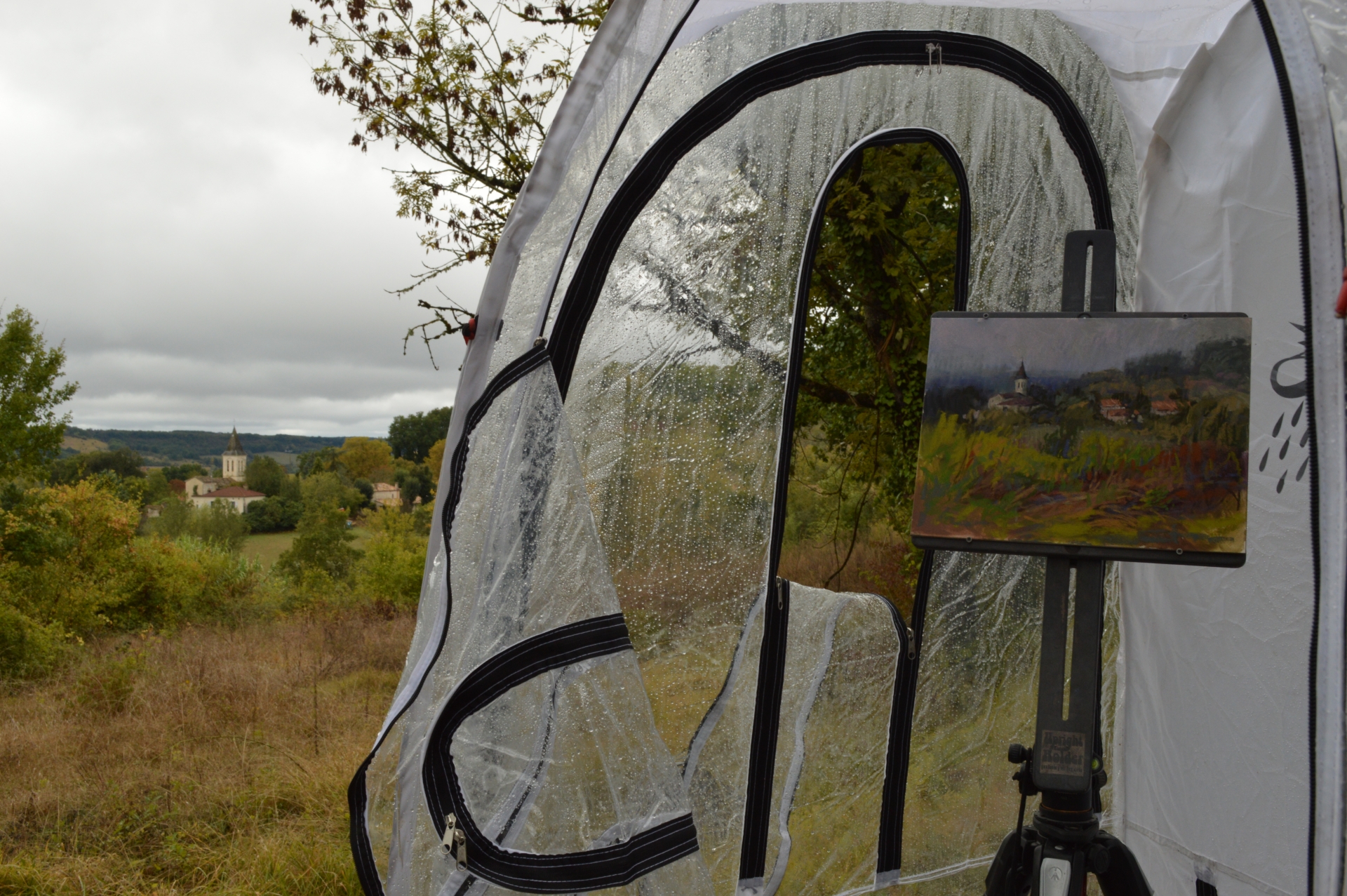
At six feet tall, the pod is tall enough for Sharon to stand inside and paint. “It has just enough room for me, my tripod and attached easel, easel butler, and large Heilman pastel box,” she said. “I have to be honest, when I say there’s just enough room, I do mean JUST enough! I can keep the door unzipped so I can step back from my work, but it isn’t easy if it’s really pelting with rain as it can pour in if you unzip it. In that case I tend to just stay squashed up close to my painting.”
She explained that the pod goes up like a pop-up tent and doesn’t have any poles. It “opens up from a flat disc in seconds. It’s a bit harder to re-pack, but not too bad. It says on the website that it’s lightweight, but when you’ve hauled it 1,000 miles on foot, it doesn’t seem that light! I attached it to my hiking trailer with bungee cords. There’s no way I would have been able to walk a long distance with it if I’d had to carry it on my back.”
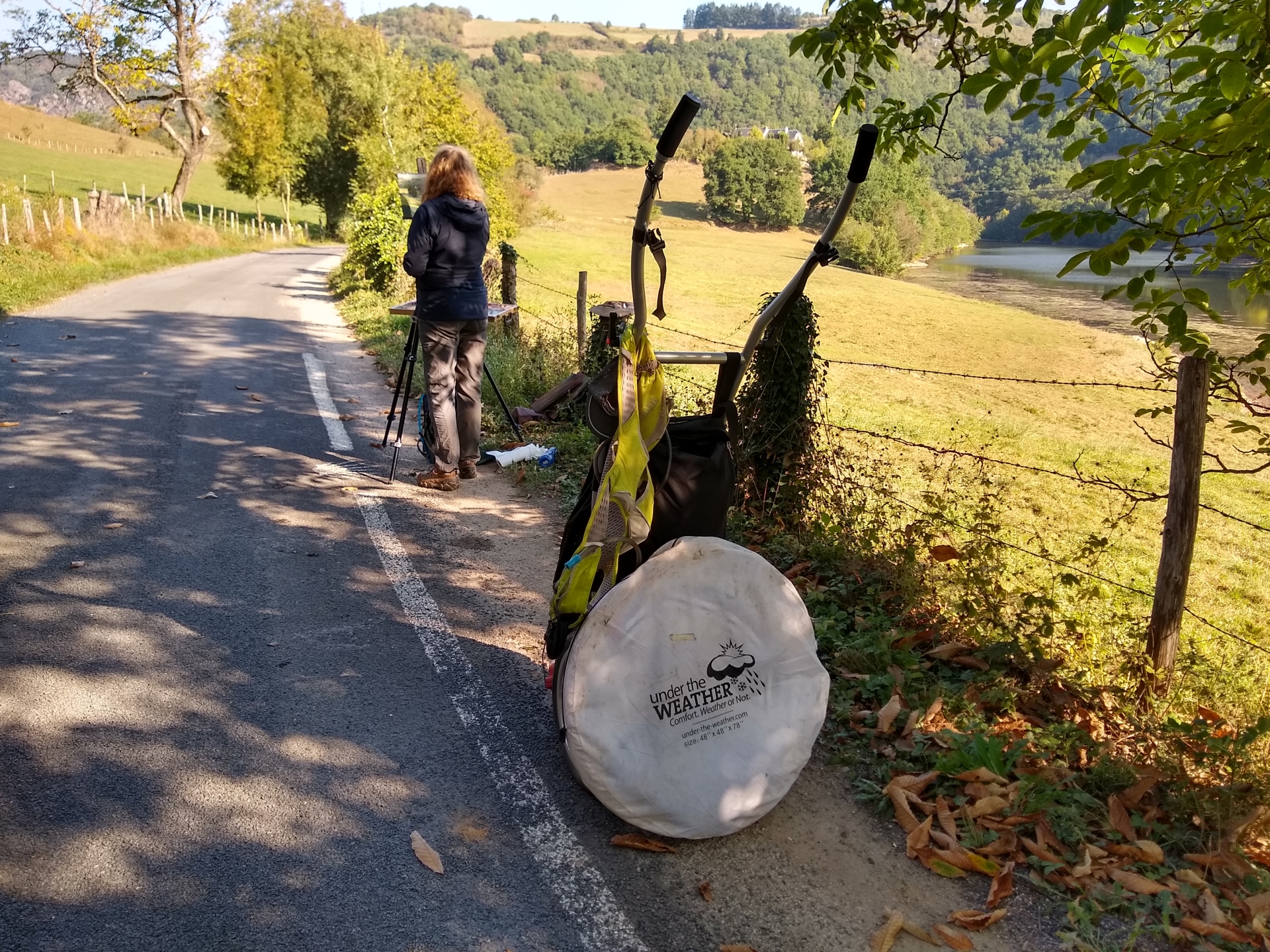
That said, she described it as “invaluable” on her expedition.
“I had made a commitment to paint every five miles along the way,” she said, “so I had no choice but to paint, no matter what the weather. This pod was easy to put up whenever and wherever I needed it (even halfway through a painting). It didn’t only protect me, the painting, and my pastels from rain and snow, but when I was inside, it also stopped some of the biting wind and warmed everything up by one or two degrees. That was important, as it was so hard to warm up and dry off on the walk.
“Some of my favorite paintings are those done in wild weather. They call to my emotions far more strongly than fair-weather paintings. If, like me, you paint in a medium that doesn’t fare well in pouring rain, or if you like to paint away from your vehicle or any other form of shelter, or if you are an expedition painter, I recommend that you try out a pod and see if it works for you.”
A Pod Alternative
“For days when I just want to protect my pastels and my painting, when I don’t care if I get wet because I can dry off and warm up afterwards, I don’t use the pod,” Sharon said. “I use three pieces of clear acrylic that I screw together with L-shaped metal brackets onto a backing board to form a box that is open at the front.
“I fix that to my easel so that it protects against rain coming from above, from the sides, or from behind my painting. It works for paintings that are 11 x 14 or smaller. I cover the open box of pastels with another sheet of clear acrylic, and I just sneak my hand under when I want to grab a pastel.”
Related Articles about Sharon Bamber’s 1,000 Mile Journey:
- PleinAir Podcast 142: Sharon Bamber’s 1,000-Mile On-Foot Painting Journey
- Every 5 Miles: Painting the Way of Saint James
Visit EricRhoads.com to find out all the amazing opportunities for artists through Streamline Publishing, including:
– Online art conferences such as Plein Air Live
– New video workshops for artists
– Incredible art retreats
– Educational and fun art conventions, and much more.
> Subscribe to Plein Air Today, a free newsletter for artists
> Subscribe to PleinAir Magazine so you never miss an issue

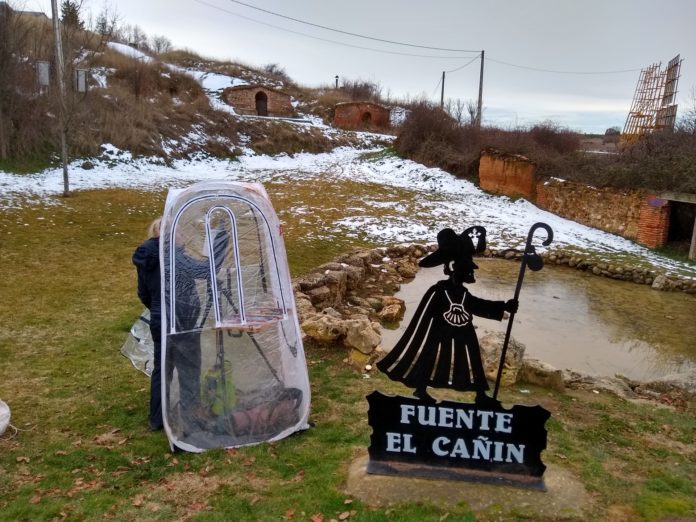


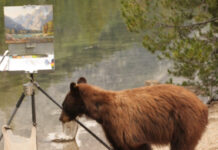

I need one of those pods. Looks very lightweight and effective
Great paintings and what a trip! Could you tell me which size pod you purchased?